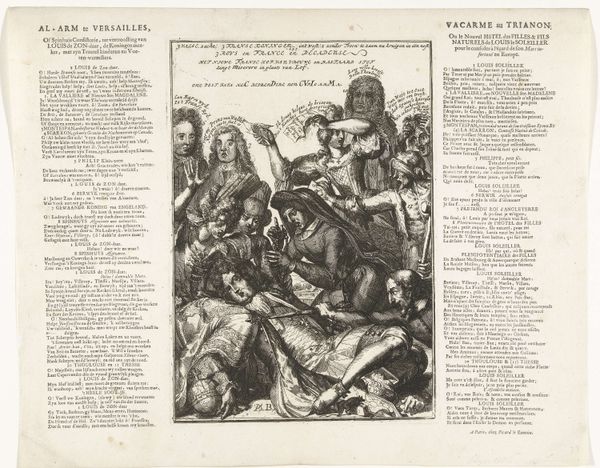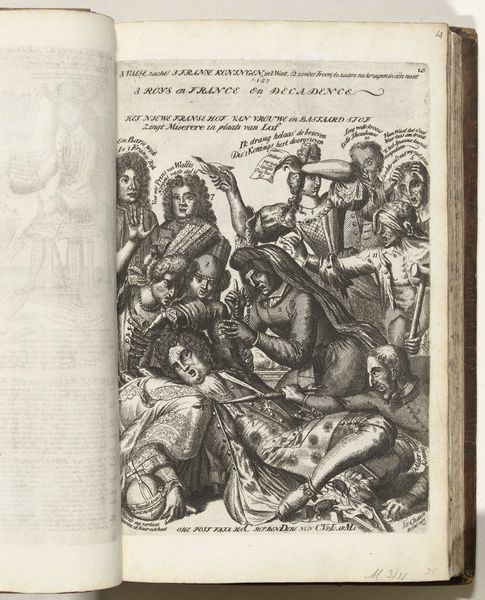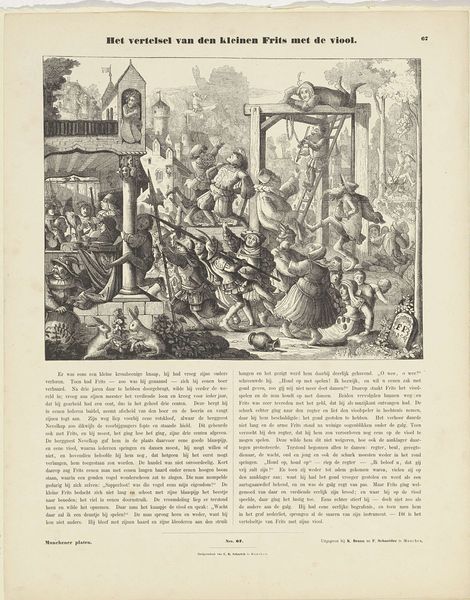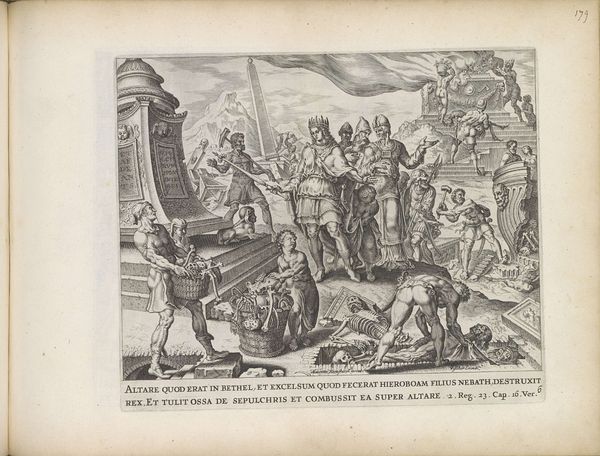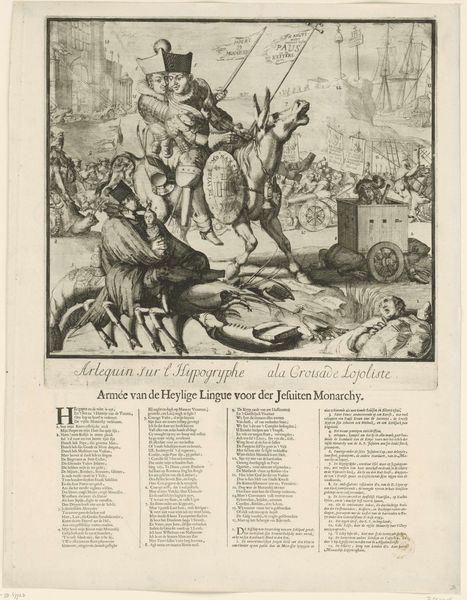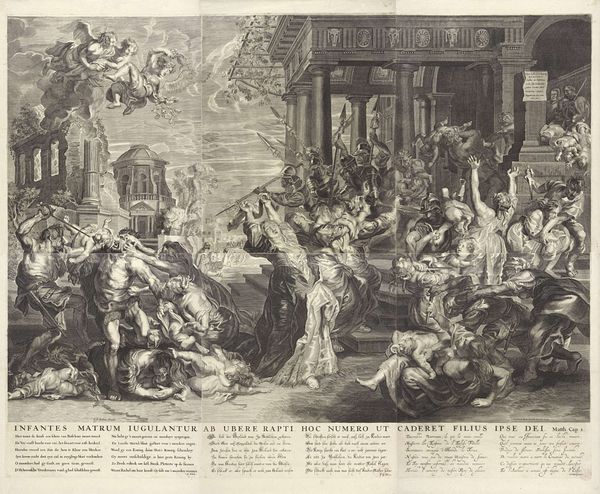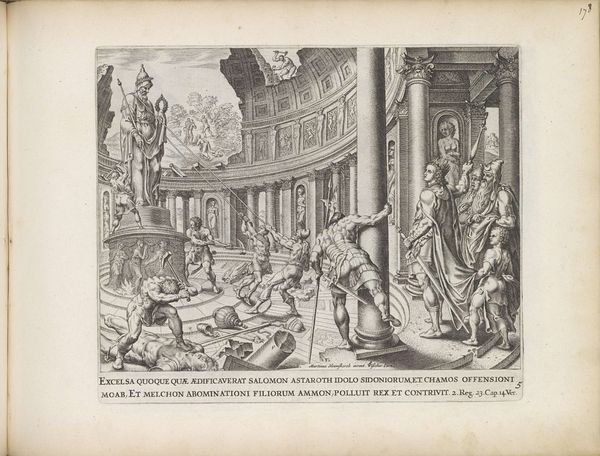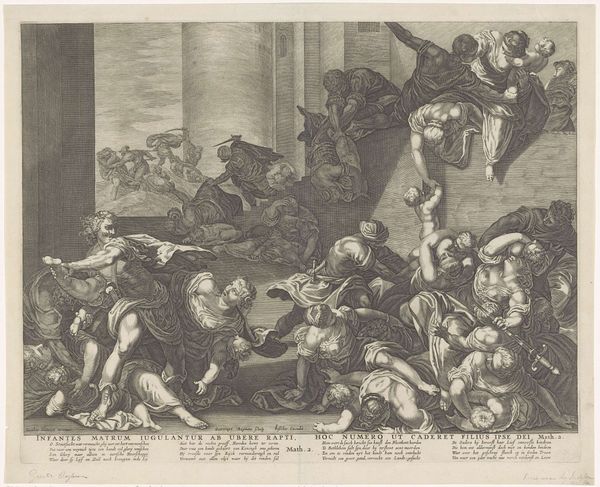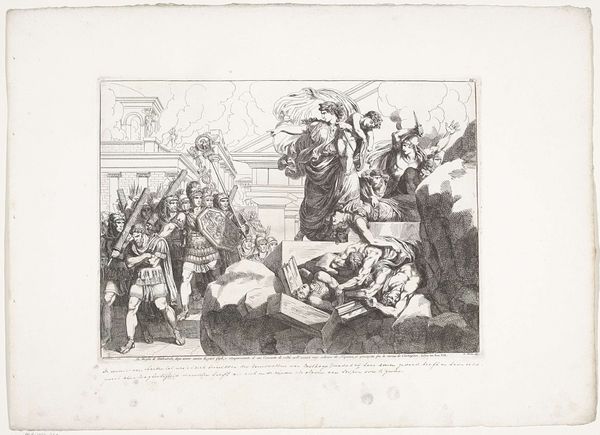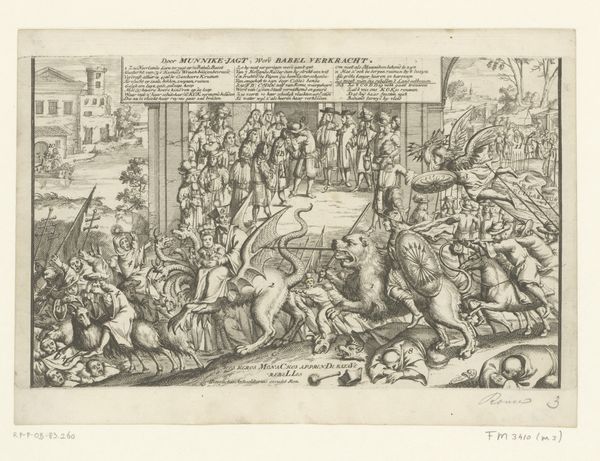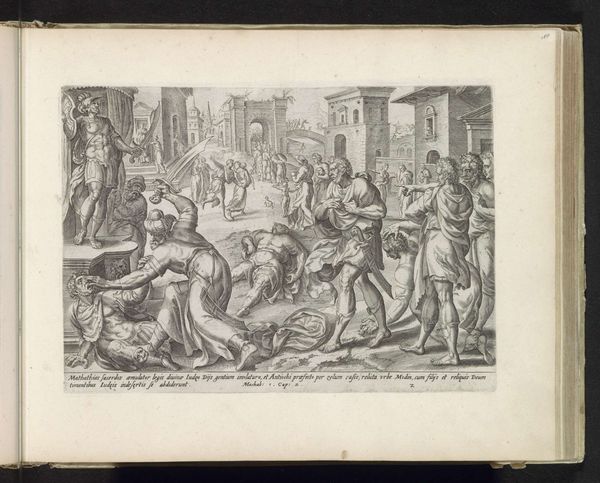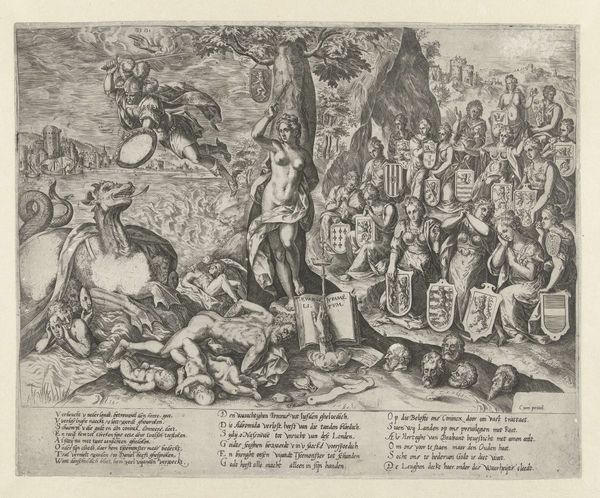
Lodewijk XIV valt ziek na het eten van harde Spaanse noten, 1706 1706
0:00
0:00
print, engraving
#
narrative-art
#
baroque
# print
#
history-painting
#
engraving
Dimensions: height 319 mm, width 400 mm
Copyright: Rijks Museum: Open Domain
Editor: Here we have "Lodewijk XIV valt ziek na het eten van harde Spaanse noten," from 1706, an engraving by Romeyn de Hooghe, housed at the Rijksmuseum. It’s quite chaotic, really; it feels like a moment frozen in dramatic tension. What do you see in this piece? Curator: Well, I see a powerful piece of propaganda wrapped in the visual language of the Baroque. It speaks volumes about the political climate of the time. This isn’t just about Louis XIV getting sick; it's a statement on the shifting power dynamics between France and Spain, playing on anxieties about French vulnerability. What elements in the composition strike you as supporting this reading? Editor: Perhaps the crowd of figures surrounding the ailing king? They seem like caricatures, almost mocking him. And the title refers to “Spanish nuts,” which points to the source of his ailment. Is that commentary on the ongoing wars, using food as a symbol? Curator: Precisely! Food becomes a potent symbol here. It's not just a literal illness, but a symbolic poisoning by Spain. The print leverages the fear and suspicion of foreign influence, especially Spanish, during a period of intense political rivalry. This kind of visual commentary shaped public opinion. Think about it - who do you think this image was intended to appeal to? Editor: Perhaps to the Dutch populace, stirring up anti-Spanish sentiment during the War of the Spanish Succession? Curator: Exactly! And notice how the text around the central image adds another layer, using inflammatory language to reinforce the message. De Hooghe masterfully uses the print medium to disseminate a powerful political narrative. How do we, as contemporary viewers, unpack this narrative responsibly, being aware of its inherent biases? Editor: We have to be aware of the context in which the artwork was created, and its potential effect on the Dutch population at the time. This feels like a great example of art being used to persuade people. Curator: It certainly is. And in viewing this, we learn not just about art history but about how powerful nations can wield rhetoric, how fears surrounding national identity influence socio-political life.
Comments
No comments
Be the first to comment and join the conversation on the ultimate creative platform.
